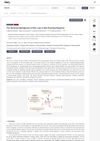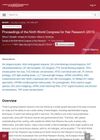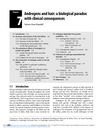According to one study, topical spironolactone is more effective than topical finasteride for both men women. Treatment 9/13/2021
Topical spironolactone is more effective than topical finasteride for treating hair loss in both men and women. Oral spironolactone can affect testosterone, but the topical form doesn't impact the endocrine system.
View this post in the Community →
Similar Community Posts Join
5 / 1000+ resultscommunity DHT results after 1 year on dutasteride, confused and seeking guidance
The user is experiencing rapid hair loss despite using dutasteride, finasteride, and minoxidil, and is concerned about high estradiol and testosterone levels. They are advised to consult an endocrinologist for potential hormonal imbalances.
community Boys I am just a gonner. What on earth is my scalp even going through. Looks like world war 3. Pyril 3 months. Topical melitonin/progesterone/fin, dut, fin, oral min, laser trash, anus stimulation. Nothing. Donor area is decimated 😂.
Treating Seborrheic Dermatitis, a fungal scalp condition which can cause hair loss. Treatments discussed include antifungal shampoos, cold showers, exfoliating the scalp, taking Vitamin D, and stimulating the prostate through the anus.
community Dutasteride SAVES your hair follicles: MAJOR BS on people who say it destroyed their hair permanently.
The conversation discusses the effectiveness of hair loss treatments, specifically finasteride and dutasteride. The conclusion is that dutasteride significantly reduces DHT levels and may be more effective than finasteride for long-term hair retention, with some users reporting personal experiences and side effects.
community Goodbye y'all, it's been a journey but have accepted where I'm at
The conclusion of this conversation about hair loss is that the user, y00sh420, tried various treatments including a $700 lllt helmet, topical minoxidil and finasteride, spectraDNC, and micro needling, but did not achieve the desired results. They have decided to stop trying until a cure for male pattern baldness is found. Other users expressed different opinions on hair loss treatments.
community 2020 updated guide for "I'm losing my hair, what do I do?". I've been taking Propecia for 12 years, and you can AMA.
Hair loss treatments discussed include Propecia, Rogaine, Nizoral shampoo, and dermarolling. Users shared experiences and results, with some noticing improvements in hair growth and maintenance.
Related Research
6 / 1000+ results
research The Hormonal Background of Hair Loss in Non-Scarring Alopecias
Hormones like androgens, estrogen, thyroid hormones, and stress hormones can contribute to hair loss, and treatments target these hormonal imbalances.

research Antiandrogens and Androgen Inhibitors in Dermatologic Treatments
Antiandrogens and androgen inhibitors like spironolactone, finasteride, and dutasteride can treat hair loss and skin conditions, but they have risks and side effects, including potential harm to pregnant women and risks of cancer and heart issues. Herbal remedies also have antiandrogenic effects but lack safety validation.

research Androgenetic Alopecia: A Review and Emerging Treatments
Hair loss, known as Androgenetic Alopecia, is often caused by hormones and can be diagnosed using noninvasive techniques. Treatments include topical minoxidil and oral finasteride, with new treatments being explored. There may also be a link between this type of hair loss and heart disease risk.

research Proceedings of the Ninth World Congress for Hair Research 2015
The 2015 Hair Research Congress concluded that stem cells, maraviroc, and simvastatin could potentially treat Alopecia Areata, topical minoxidil, finasteride, and steroids could treat Frontal Fibrosing Alopecia, and PTGDR2 antagonists could also treat alopecia. They also found that low-level light therapy could help with hair loss, a robotic device could assist in hair extraction, and nutrition could aid hair growth. They suggested that Alopecia Areata is an inflammatory disorder, not a single disease, indicating a need for personalized treatments.

research Androgens and Hair: A Biological Paradox with Clinical Consequences
Androgens can both increase body hair and cause scalp hair loss.